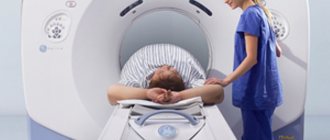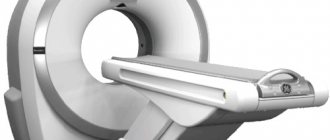MRI
We are starting a series of publications dedicated to answering pressing questions about changes due to
Currently, the main methods of radiation diagnostics are radiography, computed tomography (CT) and magnetic resonance imaging.
Computed tomography of cerebral vessels CT angiography of cerebral vessels allows one to study the state of the arterial
X-ray of the stomach is a diagnostic method for identifying functional disorders and diseases, allowing one to assess the size and
General description Electroencephalography (EEG) is a functional diagnostic method that allows you to assess the state of the brain
CT scan of the intestine is most often used as a diagnostic tool in the gastroenterological area. This method is non-invasive,
X-ray is a research method used to diagnose a particular disease, as well as
A CT scan uses x-rays to visualize the spine. During a CT scan of the spine, the patient will lie on
Computed tomography of the abdominal organs is a method of examining internal organs, often used in modern
Fluorography is a medical examination of the chest organs. It is carried out using X-rays,








